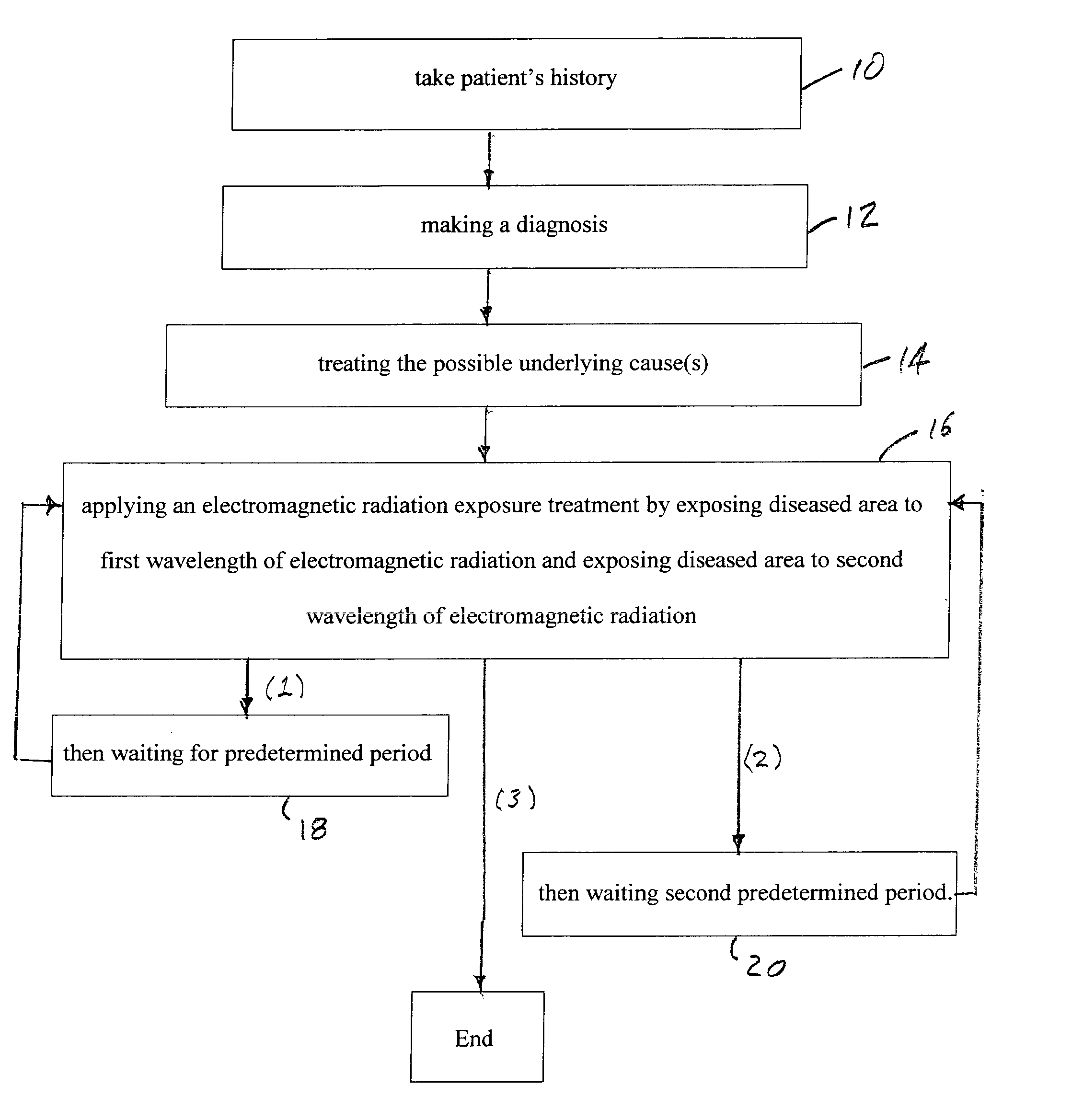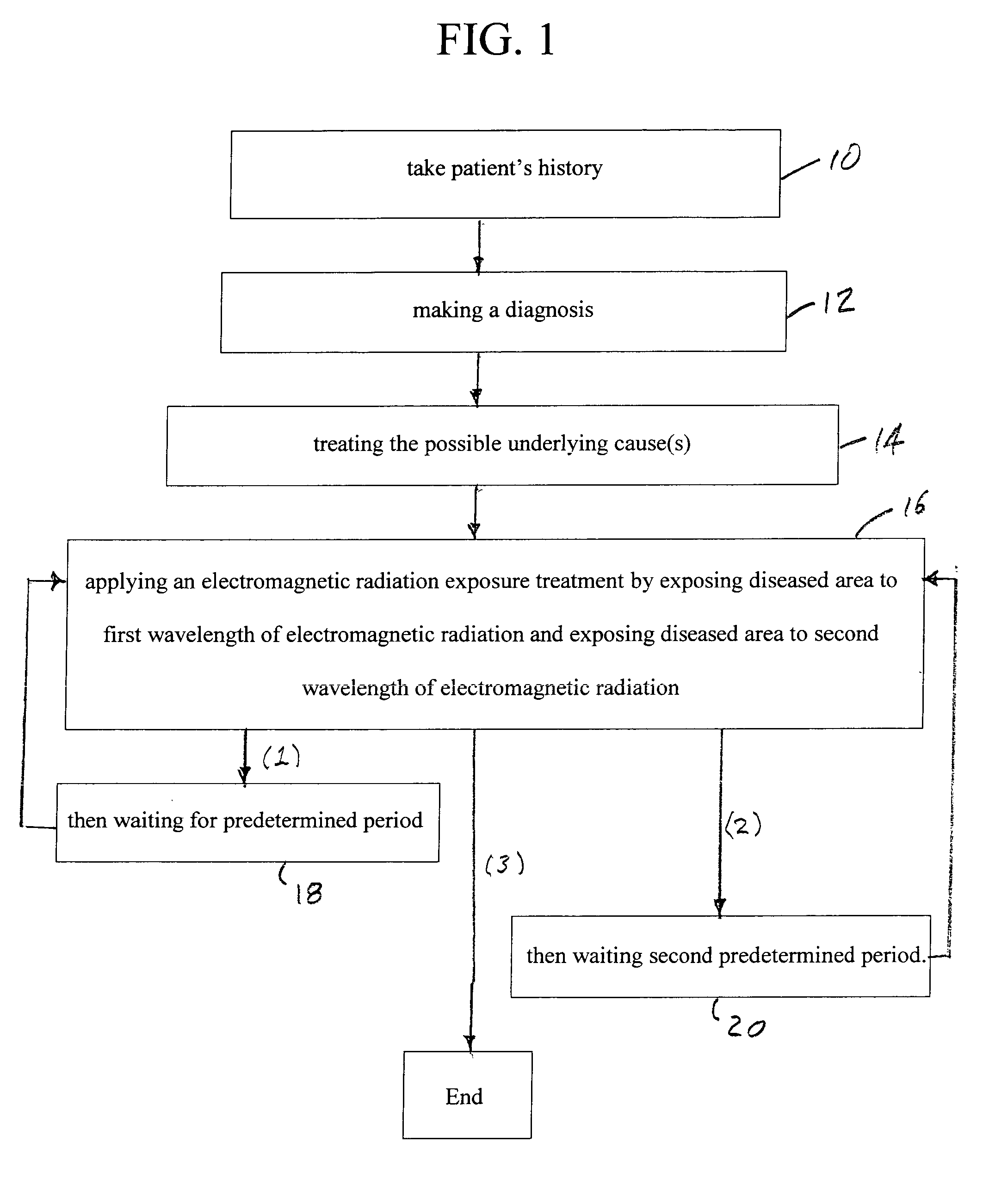Method of using radiation to treat cutaneous and sub-cutaneous conditions
a technology of electromagnetic radiation and cutaneous and subcutaneous conditions, applied in radiation therapy, medical science, therapy, etc., can solve the problems of high degree of time coherence of laser radiation, high degree of vaporization or at least damage of absorbing hemoglobin, and often tenderness of entire lesion to pressure, so as to reduce the severity
- Summary
- Abstract
- Description
- Claims
- Application Information
AI Technical Summary
Problems solved by technology
Method used
Image
Examples
Embodiment Construction
As noted above, the applicant has discovered that electromagnetic radiation may successfully treat the symptoms of lipodermatosclerosis. The symptoms include induration, hyperhidrosis or other fluid weeping, brawny or leathery skin, hyperpigmentation, and pain, tenderness, and discomfort.
In the applicant's most preferred embodiment, differing wavelengths of laser radiation are swept in sequence over an area on a patient's body suffering from one or more of these symptoms. One laser wavelength penetrates the skin and underlying subcutaneous tissue to a relatively shallow depth as compared to the depth of penetration of at least a second laser wavelength applied during the treatment.
In the preferred embodiment, one laser wavelength penetrates the skin and underlying subcutaneous tissue to a depth of 3-4 millimeters and is absorbed by at least hemoglobin and melanin and most preferably also by certain bacteria such as coryne or staph bacteria for example. A second laser wavelength...
PUM
 Login to View More
Login to View More Abstract
Description
Claims
Application Information
 Login to View More
Login to View More - R&D
- Intellectual Property
- Life Sciences
- Materials
- Tech Scout
- Unparalleled Data Quality
- Higher Quality Content
- 60% Fewer Hallucinations
Browse by: Latest US Patents, China's latest patents, Technical Efficacy Thesaurus, Application Domain, Technology Topic, Popular Technical Reports.
© 2025 PatSnap. All rights reserved.Legal|Privacy policy|Modern Slavery Act Transparency Statement|Sitemap|About US| Contact US: help@patsnap.com


